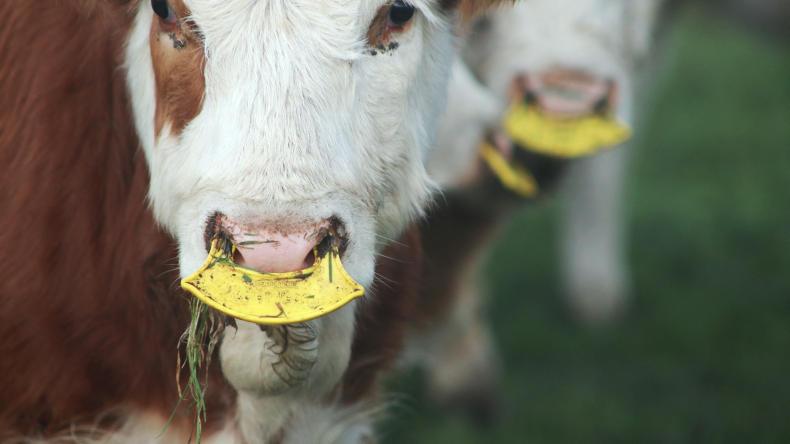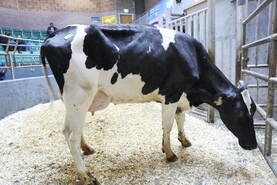The last 10 days of dry weather took a lot of pressure off. Following a soaked October, the dry spell, short as it was, allowed paddocks to be cleaned off nicely.
Grazing for 2019 is drawing to a close and all that remains out at grass are a few cows that will be out-wintered and the in-calf heifers who are on the out farm. Weather will dictate when they come home.
Weaning is now complete. Quiet Wean nose paddles were used on the calves that were outdoors while there was enough space to separate the cows and calves that were indoors into pens alongside each other.
Frustrating
It’s a very frustrating time to be a farmer. I tuned into some of the programmes on climate change on RTÉ last week. Some were balanced, others clearly were not.
It’s frustrating when an effort is being made to adapt, yet it feels like farmers are constantly portrayed as the climate villains. Agriculture is an easier target for most people than say, aviation or consumerism because it doesn’t affect them directly.
Climate change measures have been flagged in Irish agriculture for some time and moves have been made to be proactive but change requires time.
You don’t just turn on or off a switch when dealing with farming or nature. It’s not as simple as going out and buying the latest smart phone and the change is instantly made.
As a farmer, I’m not afraid of change. It’s been a constant since people started farming. I think those supplying farmers would probably be more concerned than the primary producer if environmental rules tighten further. It would also mean that reality could gain some ground on some overly green marketing too.
On this farm, fertiliser usage has been reduced by two thirds since 2012. I’ve become more aware of the effects of excess nutrients since but initially we just wanted to see what could be saved financially. Since then we continue to try and cut costs without cutting corners.
Trees and hedges were planted most years since I’ve been farming. Grass seed mixes now include at least three different plant species.
Wildlife on the farm ranges from the common lizard to various mammals and invertebrates. Choughs, a coastal crow with red or orange beak and feet, have grown in numbers over 20 years and since 2016, buzzards are a common sight.
If I get in the car and drive into the west Cork towns of Bandon, Clonakilty and Skibbereen I can see rivers that have, for want of a better word, been sterilised. They are drainage and flood preventative measures, I understand that.
Some of the natural flood prevention was built on since the late 90s, as a consequence, these works were required to save peoples homes and businesses. They’re more like canals. Concrete edges instead of natural river banks, yet farmers keep getting the blame on biodiversity?
Ask a junior cert geography class studying settlement and rivers and they’d tell you not to build on a flood plain.
I spoke to a few Dutch farmers recently and they said the main reason for their tractor protests was that they struggled with the regularity of changes to rules and standards imposed on them. They invested and adapted their farms as required and within five years the goalposts had moved. Hopefully policymakers will take note of those protests and we can implement some long term plans here.






 This is a subscriber-only article
This is a subscriber-only article











SHARING OPTIONS: